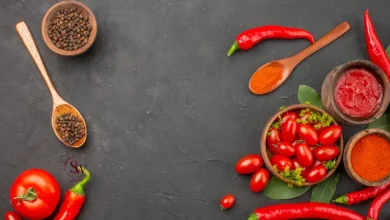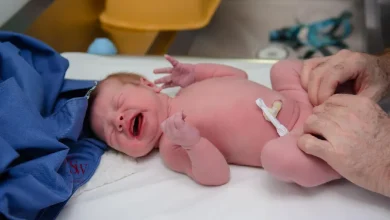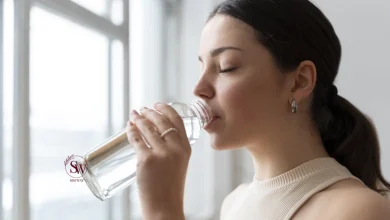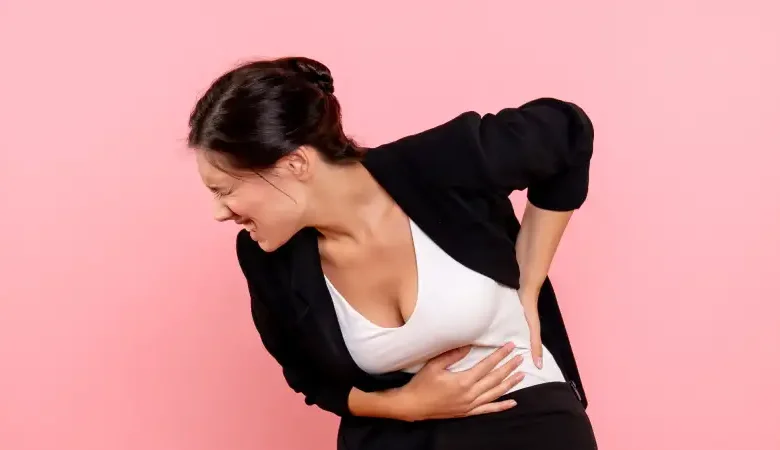
Kidney Stones in a Female
Kidney stones are a common condition that can affect anyone, including women. While men have historically been more prone to kidney stones, the prevalence of kidney stones in women has been increasing in recent years. In this article from sisiway, we will explore the causes, symptoms, and prevention strategies for kidney stones in women.
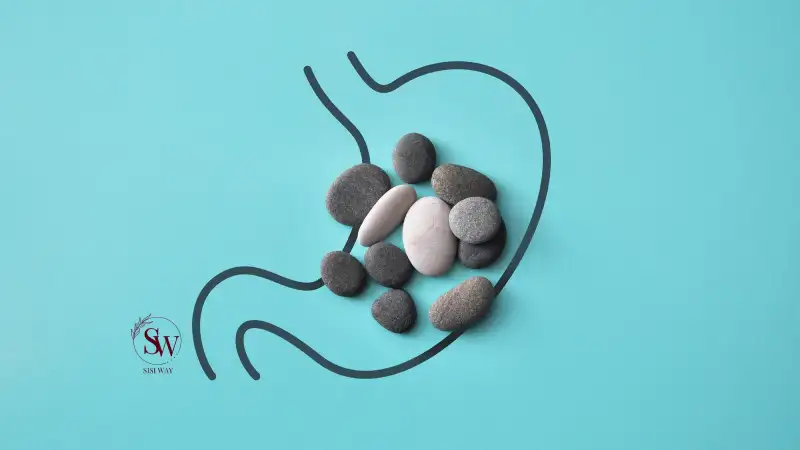
Kidney Stone Pain Location Woman
In women, the location of kidney stone pain can vary depending on the size and position of the stone. However, the most common location for kidney stone pain in both men and women is the back and side, below the ribs. The pain may radiate from the back to the lower abdomen and groin area.
Also read: foods bad for kidney stones

Here are some possible locations where women may experience kidney stone pain:
Flank Pain
The pain may be felt on one side of the back, just below the rib cage. It can be a sharp, severe, or cramping pain that comes and goes.
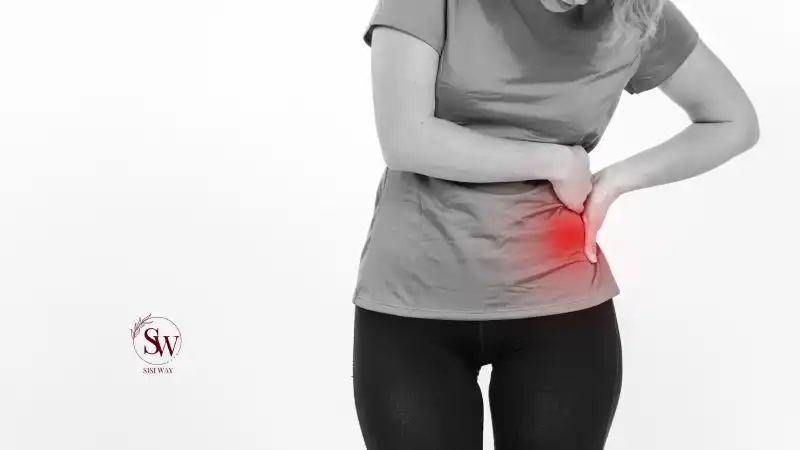
Lower Abdominal Pain
As the stone moves through the urinary tract, the pain can radiate to the lower abdomen. It may be accompanied by a feeling of pressure or discomfort.
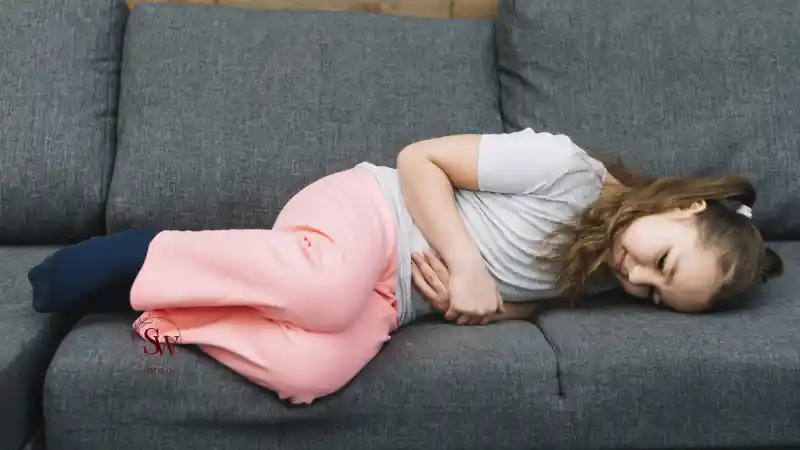
Groin Pain
In some cases, the pain can extend to the groin area and may be felt on one side. This can be particularly noticeable as the stone approaches the bladder.

It’s important to note that the exact location and intensity of kidney stone pain in women can vary from person to person. Additionally, other symptoms such as blood in the urine (hematuria), frequent urination, and changes in urine color or odor may accompany the pain.
If you experience severe or persistent pain, it is important to seek medical attention for proper diagnosis and treatment. A healthcare professional can evaluate your symptoms, conduct diagnostic tests, and provide appropriate management options based on your specific situation.
Causes of Kidney Stones in Women
The formation of kidney stones occurs when certain substances in the urine, such as calcium, oxalate, and uric acid, crystallize and clump together. Several factors contribute to the development of kidney stones in women:
The formation of kidney stones in women can be influenced by various factors. Here are some common causes:
-
Dehydration and Kidney Stones in Female
Inadequate fluid intake can lead to concentrated urine, making it easier for minerals and substances to crystallize and form stones in the kidneys.

-
Diet and Kidney Stones in Women
Certain dietary factors can contribute to kidney stone formation. Consuming a diet high in sodium, animal protein, and oxalate-rich foods increases the risk. Foods such as processed foods, red meat, spinach, rhubarb, chocolate, and certain types of nuts can be high in oxalate, which can combine with calcium to form stones. Diet can confidently be considered influential in the management of kidney stones in women.
Read more: women’s diet for abs
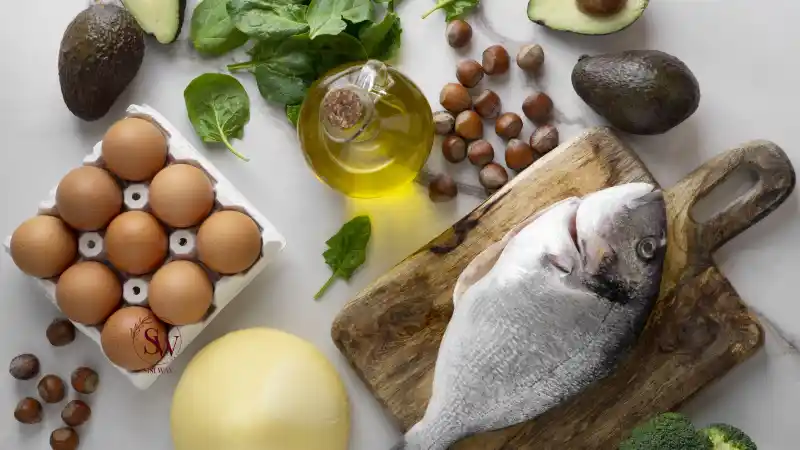
-
Obesity and Kidney Stones in Female
Being overweight or obese can increase the risk of kidney stone formation. Obesity can lead to changes in urine composition and higher levels of certain substances that promote stone formation.

-
Family History
A family history of kidney stones can predispose women to developing stones themselves. Certain genetic factors can influence the likelihood of stone formation.
-
Hormonal Factors
Hormonal changes during pregnancy, menopause, or the use of hormone replacement therapy may increase the risk of kidney stone formation in women. Changes in hormone levels can affect urine composition and promote stone formation.
Urinary Tract Infections (UTIs):
UTIs can create an environment conducive to the formation of certain types of kidney stones. Bacterial infections can alter urine composition and promote stone development.
Underlying Medical Conditions
Certain medical conditions can increase the likelihood of kidney stone in female. Conditions like hyperparathyroidism, renal tubular acidosis, cystinuria, and inflammatory bowel disease can contribute to stone formation.
-
Medications and Supplements:
Some medications and supplements can increase the risk of kidney stone formation. For example, long-term use of certain diuretics, antacids containing calcium, and high-dose vitamin C supplements may be associated with an increased risk.
It’s important to note that each individual’s risk factors and underlying causes for kidney stone formation may vary. If you have concerns about kidney stones or are experiencing symptoms, it is recommended to consult with a healthcare professional who can provide a comprehensive evaluation and personalized advice based on your specific situation.

Here is a table summarizing the common factors that can contribute to kidney stone formation in women
| Factors | Description |
| Dehydration | Inadequate fluid intake leading to concentrated urine, facilitating the crystallization of minerals and stones. |
| Diet | High intake of sodium, animal protein, and oxalate-rich foods, which can promote stone formation. |
| Obesity | Being overweight or obese increases the risk of kidney stone formation due to changes in urine composition. |
| Family History | A family history of kidney stones can predispose women to developing stones themselves. |
| Hormonal Factors | Hormonal changes during pregnancy, menopause, or hormone replacement therapy can increase stone risk. |
| Urinary Tract Infections | UTIs can create an environment favorable for stone formation by altering urine composition. |
| Underlying Medical Conditions | Certain conditions like hyperparathyroidism, renal tubular acidosis, cystinuria, and inflammatory bowel disease can contribute to stone formation. |
| Medications and Supplements | Certain medications and supplements, such as diuretics, calcium-containing antacids, and high-dose vitamin C, can increase the risk of kidney stones.
|
Kidney Stone Woman Pain
Kidney stone pain in women is often described as one of the most severe types of pain. The intensity of the pain can vary from person to person and may depend on factors such as the size, location, and type of kidney stone, as well as an individual’s pain threshold.
Many women who have experienced kidney stone pain liken it to intense, sharp, or cramping pain. The pain is often described as coming in waves or episodes, with periods of relative relief in between. Some women may experience constant pain, while others may have intermittent episodes of pain as the stone moves within the urinary tract.
The severity of the pain can be debilitating and may affect daily activities, causing distress and discomfort. The pain typically originates in the back or side, just below the ribs, and may radiate to the lower abdomen and groin as the stone progresses through the urinary tract.
It’s important to note that pain perception is subjective, and individuals may have different experiences with kidney stone pain. If you suspect you have kidney stones and are experiencing severe or persistent pain, it is important to seek medical attention for proper diagnosis and appropriate pain management strategies. A healthcare professional can evaluate your symptoms and provide the necessary guidance and treatment options based on your specific situation.
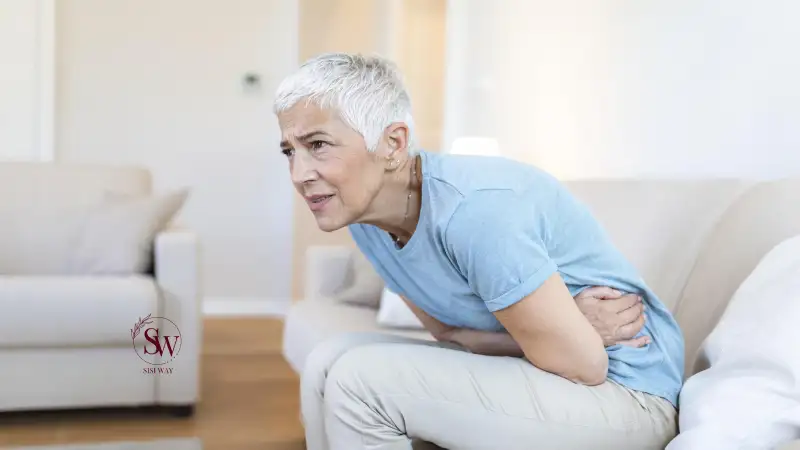
Percentage of Women with Kidney Stones
The probability of a woman developing kidney stones can vary depending on several factors, including individual risk factors, lifestyle choices, and genetic predisposition. While kidney stones can occur in both men and women, men tend to have a slightly higher overall prevalence of kidney stones compared to women.
According to research, the lifetime risk of developing kidney stones in women is estimated to be around 10-15%. This means that approximately 1 in 10 to 1 in 7 women may develop kidney stones at some point in their lives. It’s important to note that the risk can vary based on various factors, such as age, family history, dietary habits, underlying medical conditions, and geographic location. For example, women who have a family history of kidney stones or have certain medical conditions, such as hyperparathyroidism or renal tubular acidosis, may have a higher risk.
Additionally, certain lifestyle factors, such as inadequate fluid intake, a high-sodium or high-protein diet, and being overweight or obese, can increase the risk of kidney stone formation in women.
It’s worth mentioning that the information provided above represents a general estimate and that individual risks can differ. If you have concerns about kidney stones or specific risk factors, it is recommended to consult with a healthcare professional who can provide a more personalized assessment based on your medical history and circumstances.

Symptoms of Kidney Stones in Women:
Kidney stones can cause a range of symptoms in women. It’s important to note that symptoms can vary depending on factors such as the size, location, and type of kidney stone. Here are common symptoms that women may experience:
Intense Flank Pain
One of the hallmark symptoms of kidney stones is severe pain in the back or side, below the ribs. The pain is often described as sharp, cramping, or colicky in nature. It can come in waves and may radiate to the lower abdomen and groin.
Hematuria
Blood in the urine, known as hematuria, is a common symptom of kidney stones. It can cause urine to appear pink, red, or brownish. The presence of blood may be intermittent and may not always be visible to the naked eye.
Frequent Urination
Kidney stones can irritate the lining of the urinary tract, leading to increased urinary urgency and frequency. Women may feel the need to urinate more often, and the volume of urine passed may be reduced.
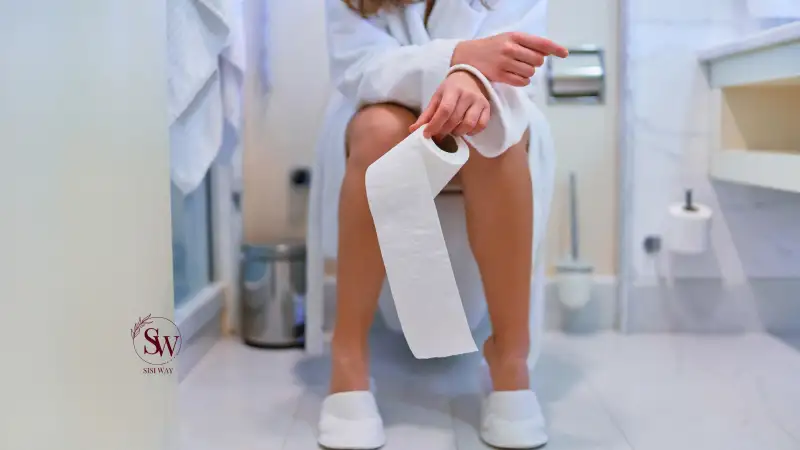
Painful Urination
Kidney stones can cause discomfort or a burning sensation during urination. This symptom is typically due to the stone’s passage through the ureter, which connects the kidneys to the bladder.
Cloudy or Foul-Smelling Urine
Kidney stones can sometimes result in changes in urine color and odor. The urine may appear cloudy or have an unpleasant smell. These changes are often associated with an underlying infection or the presence of blood.
Also read: How does a Woman Get a Urinary Tract Infection?
Nausea and Vomiting
Severe pain caused by kidney stones can trigger nausea and vomiting in some women. These symptoms may occur due to the body’s response to intense pain or the activation of the vomiting center in the brain.
It’s important to remember that not all women with kidney stones will experience symptoms. Some stones may be asymptomatic and are incidentally discovered during medical imaging or routine check-ups. If you suspect you have kidney stones or experience severe or persistent symptoms, it is important to seek medical attention for proper diagnosis and appropriate treatment. A healthcare professional can evaluate your symptoms, perform diagnostic tests, and provide the necessary guidance based on your specific situation.

Prevention Strategies for Kidney Stones in Women:
Prevention strategies for kidney stones in women focus on reducing the risk factors associated with stone formation. Here are some strategies that can help prevent women kidney stones:
Stay Hydrated:
Adequate fluid intake is crucial for preventing kidney stones. Aim to drink enough water throughout the day to keep your urine diluted. The general recommendation is to drink at least 8 cups (64 ounces) of water per day, but individual needs may vary based on factors such as climate, activity level, and medical conditions.
Follow a Balanced Diet:
Maintain a healthy and balanced diet that is low in sodium, animal protein, and oxalate-rich foods. Avoid excessive consumption of processed foods, red meat, spinach, rhubarb, chocolate, and certain types of nuts. Instead, focus on a diet rich in fruits, vegetables, whole grains, and lean proteins.

Moderate Calcium Intake:
Calcium is an essential mineral, but excessive intake can contribute to stone formation. It’s important to obtain calcium from dietary sources rather than supplements. Aim for recommended daily calcium intake (around 1,000 to 1,200 milligrams) from sources like low-fat dairy products, fortified plant-based milks, and leafy green vegetables.
Limit Sodium Intake:
High sodium levels in the diet can increase the risk of kidney stone formation. Limit your consumption of processed and packaged foods, as they tend to be high in sodium. Opt for fresh, whole foods and use herbs and spices to flavor your meals instead of relying on salt.
Moderate Protein Intake:
High intake of animal protein, particularly red meat, can increase the risk of kidney stones. Aim for a moderate protein intake and incorporate plant-based protein sources such as legumes, tofu, and nuts into your diet.
Monitor Oxalate Intake:
Oxalate-rich foods can contribute to the formation of certain types of kidney stones. While it’s not necessary to completely avoid oxalate-containing foods, it’s a good idea to moderate your consumption. Examples of high-oxalate foods include spinach, rhubarb, beets, nuts, and chocolate.
Maintain a Healthy Weight:
Obesity and excess weight can increase the risk of kidney stones. Aim to maintain a healthy weight through a combination of regular physical activity and a balanced diet.

Limit Caffeine and Alcohol:
Excessive caffeine and alcohol consumption can contribute to dehydration, which increases the risk of kidney stones. Moderation is key, so limit your intake of caffeinated beverages and alcoholic drinks.
Don’t Skip Meals:
Regular and balanced meals help maintain stable blood sugar levels and prevent the accumulation of certain substances that can contribute to stone formation. Avoid skipping meals and follow a consistent eating pattern.
Talk to Your Doctor:
If you have a history of kidney stones or are at a higher risk due to certain medical conditions or medications, consult with your healthcare professional. They can provide personalized advice and guidance based on your specific situation.
Remember, these prevention strategies are general recommendations, and it’s important to consult with a healthcare professional for personalized advice based on your individual needs and risk factors.
Conclusion:
Kidney stones can be a painful and bothersome condition for women. By following preventive measures such as staying hydrated, adopting a balanced diet, and maintaining a healthy lifestyle, women can significantly reduce their risk of kidney stone formation. If you experience symptoms suggestive of kidney stones, it is important to seek medical attention for proper diagnosis and treatment.
